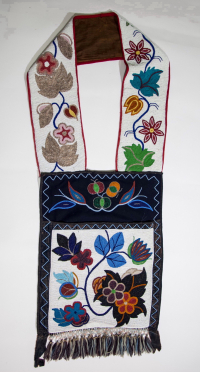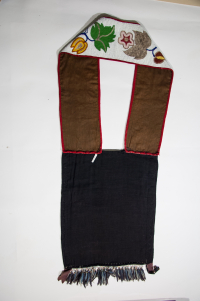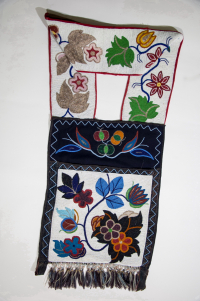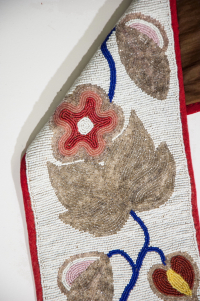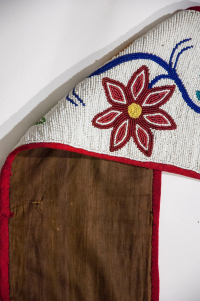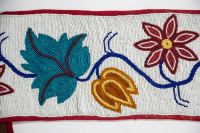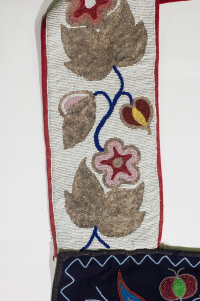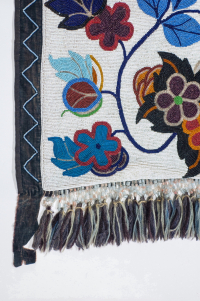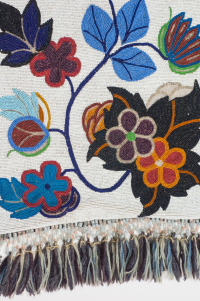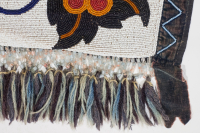Bandolier bag
Bandolier bag
Bandolier bag
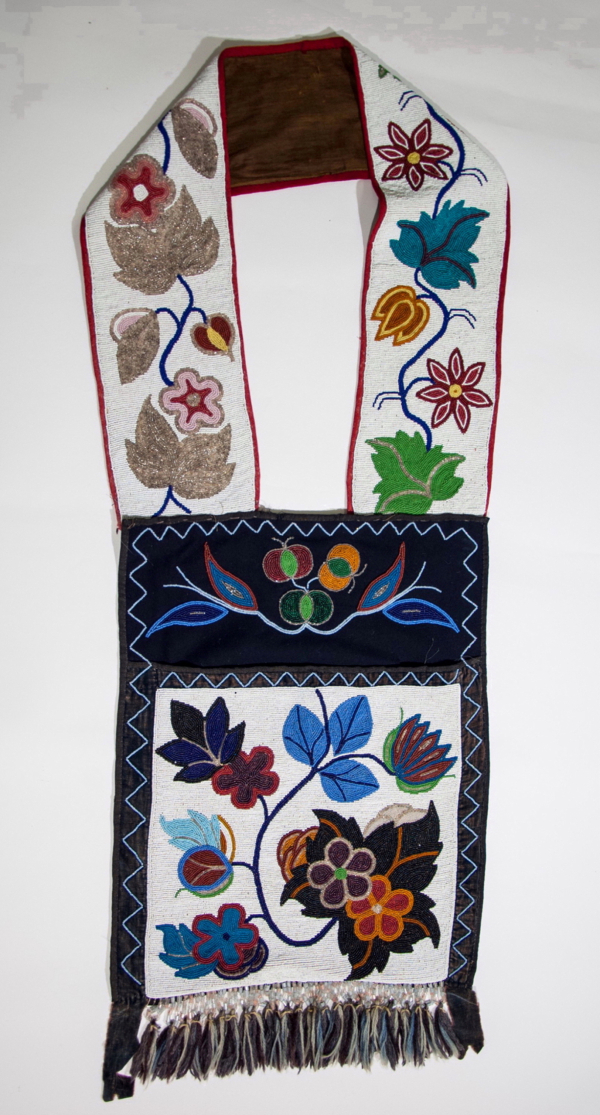
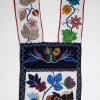

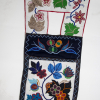
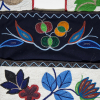


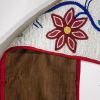
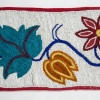
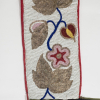
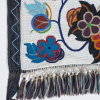
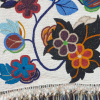
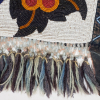
Bandolier, Appliqué spot stitch beadwork on lined pouch and straps, Bead and yarn fringe, Symmetrical & asymmetrical decorative beaded designs.
from catalogue records
Based on catalogue description
Read More About This Relative
Cotton, stroud, bias tape, seed bead, tube bead, velveteen
Hand sewn, Appliqué beadwork using the overlaid spot stitch, Strap lined with brown cotton, Pouch lined with strip of white-on-red printed cotton, Pouch and pouch panel edged with black cotton folded from behind, Pouch panel bordered with black velveteen forming tabs at bottom corners, Fringe is paired strands of pink/blue tube beads with multi-coloured yarn, Strap edged with red bias tape.
Open backed multi-coloured seed bead floral design on white field on straps and pouch, Border of pouch and pouch panel decorated with blue zigzag applied design, Appliqué beadwork using the overlaid spot stitch of opaque, transparent and semi-transparent beads, Symmetrical floral and stem design on panel above pouch, Asymmetrical floral, stem and leaf curvilinear design on straps.
Bandolier adopted by Ojibwa in 19th century after seeing bullet pouches used by British soldiers. Bullet pouches were plain and decorated with crest or coat of arms. When idea adopted by Ojibwa, they were greatly prized and highly decorated ceremonial accessories. They became so highly prized by Ojibwa and other tribes (especially Sioux), that one bandolier could be traded for one pony. They became a status symbol of highest ranking Midewiwin priests. Very little evidence that bandoliers were used to carry anything; also called "friendship bags" - beads: their use by Upper Great Lakes Indians, Grand Rapids Public Museum (N.D.)
Descriptive information taken from catalogue records.
Provenance
catalogue records
About This GRASAC Record
Manitoba Museum
43.6, -71.9
attributed to Northeast Great Lakes-Riverine
 Knowledge Sharing Platform
Knowledge Sharing Platform

